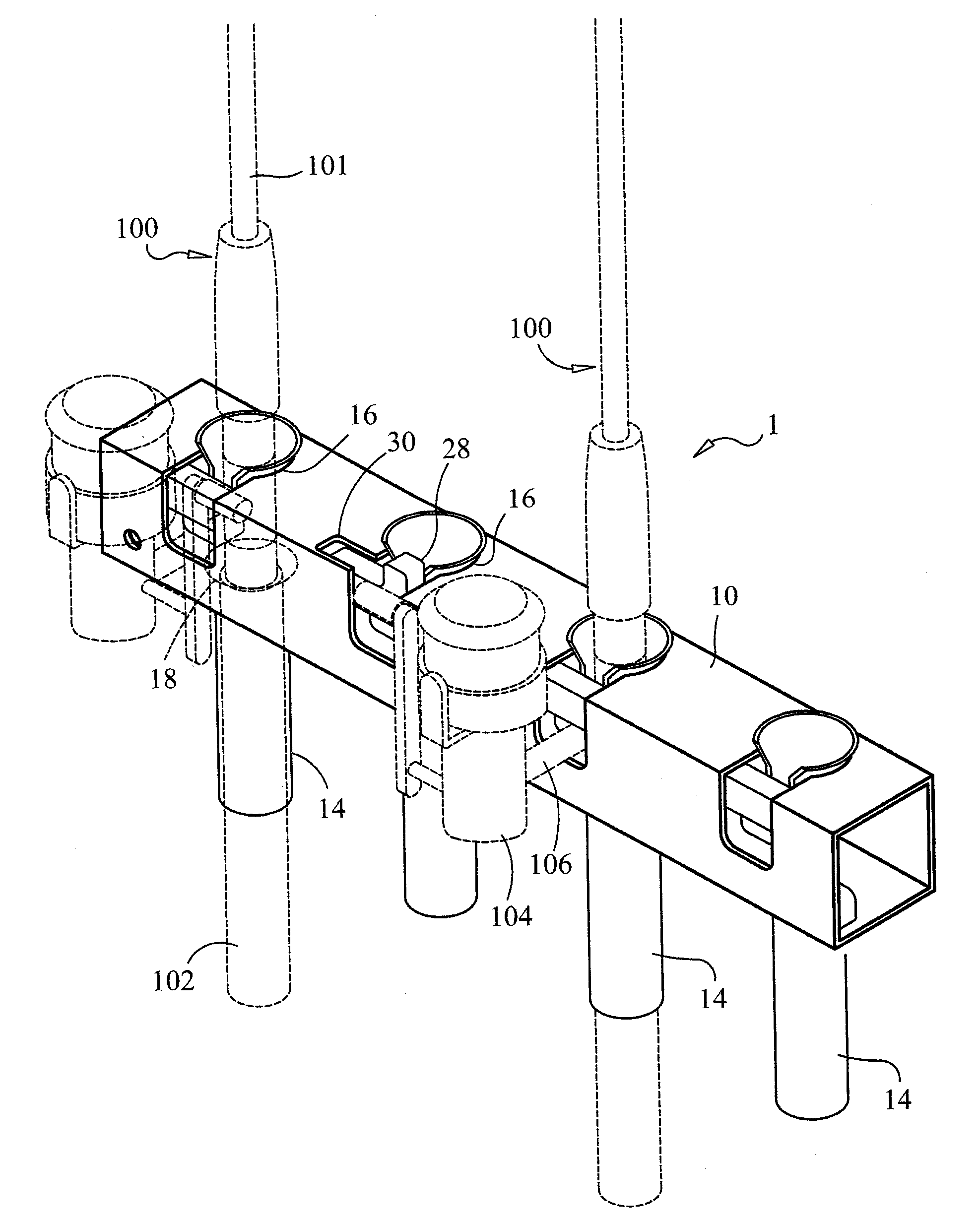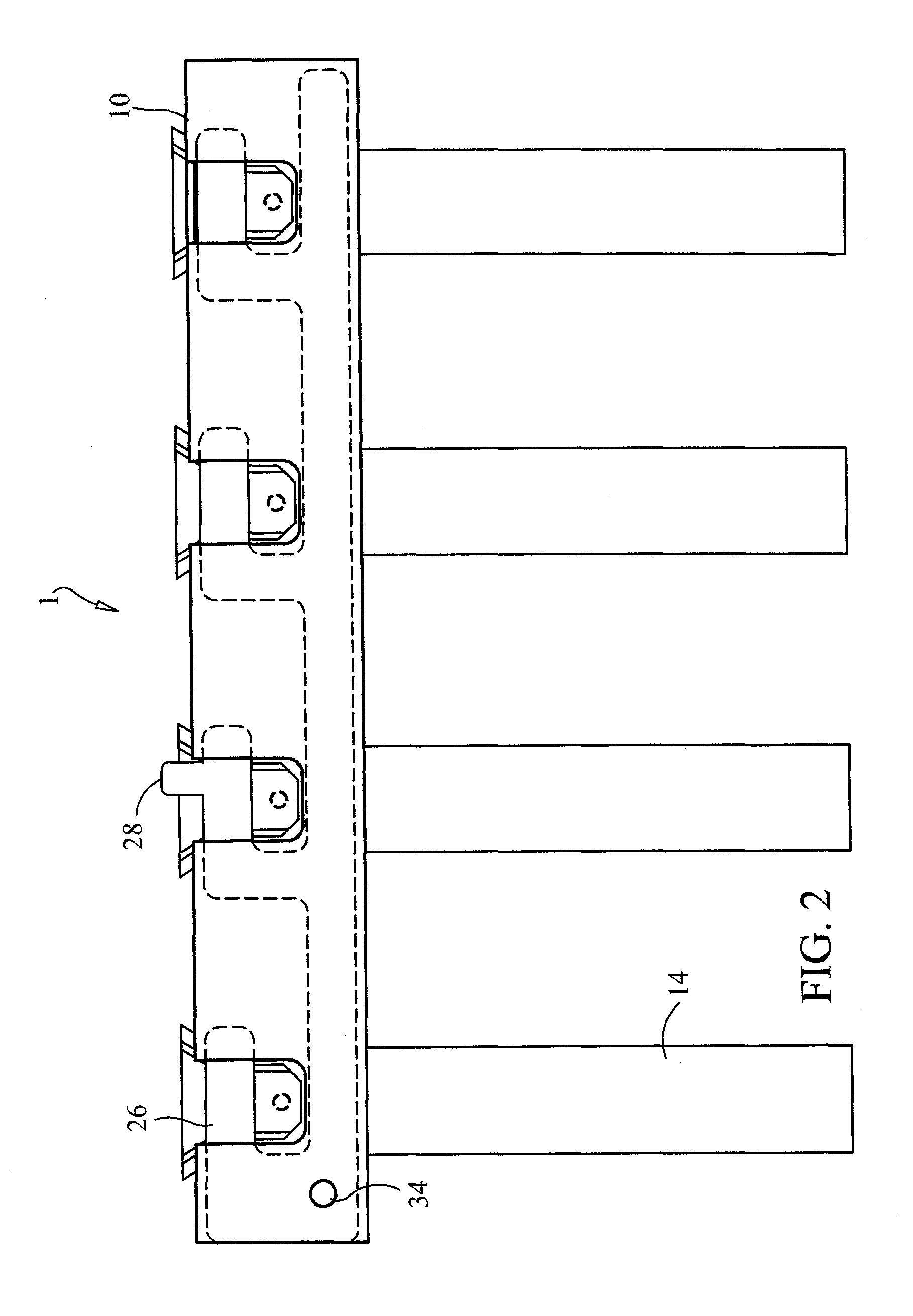Locking storage systems for fishing rods
a storage system and fishing rod technology, applied in the field of fishing rods, can solve the problems of theft of fishing rods, cumbersome storage, and often unattended, and achieve the effects of reducing the risk of th
- Summary
- Abstract
- Description
- Claims
- Application Information
AI Technical Summary
Problems solved by technology
Method used
Image
Examples
second embodiment
[0040]Referring briefly to FIGS. 9–11, locking storage system for fishing rods 2 preferably includes a contoured rod base 58 and a sliding lock plate 60. The contoured rod base 58 preferably includes at least two contoured cavities 62 that are each sized to receive a bait-casting, trolling, or other reel 114. Many reels 114 are configured with a reel clamp which can aid in preventing access to mounting hardware once fishing rods are inserted in place. A rod hole 64 is formed through a bottom of the contoured rod base 58 to receive an end 118 of a rod 116. At least two sliding plate retainers 66 extend from a front of the contoured rod base 58. At least two sliding plate retainers 66 are sized to slidably receive the sliding lock plate 60.
[0041]A plate-locking hole 68 is formed through one end of the sliding lock plate 60 and a base lock hole 70 is formed through one end of the contoured rod base 58. The plate-locking hole 68 and the base lock hole 70 are sized to receive the bolt 11...
third embodiment
[0043]Referring briefly to FIGS. 13–14, a locking storage system for fishing rods 3 preferably includes a rod tray 74, a rod support 76 and a swinging lock plate 78. The rod tray 74 includes a base 80 and a peripheral wall 82 extending upward from a perphery of the base 80. A rod support 84 extends upward from the base 80. At least two rod cavities 86 are formed in a top of the rod support 84 to receive the rods 116 of at least two fishing rods 111. One end of the swinging lock plate 78 is pivotally attached to the rod support 84. The other end of the swinging lock plate 78 is captured by a lock plate 88 extending from the peripheral wall 82. A lock hole 89 is formed through the other end of the swinging lock plate 78 and the lock plate 88 to receive a bolt of a padlock (not shown).
[0044]At least two parallel slots 90 are preferably formed in one side of the swinging lock plate 78. At least two rod holes 92 are formed through the peripheral wall 82 to receive at least two fishing ro...
PUM
 Login to View More
Login to View More Abstract
Description
Claims
Application Information
 Login to View More
Login to View More - R&D
- Intellectual Property
- Life Sciences
- Materials
- Tech Scout
- Unparalleled Data Quality
- Higher Quality Content
- 60% Fewer Hallucinations
Browse by: Latest US Patents, China's latest patents, Technical Efficacy Thesaurus, Application Domain, Technology Topic, Popular Technical Reports.
© 2025 PatSnap. All rights reserved.Legal|Privacy policy|Modern Slavery Act Transparency Statement|Sitemap|About US| Contact US: help@patsnap.com



